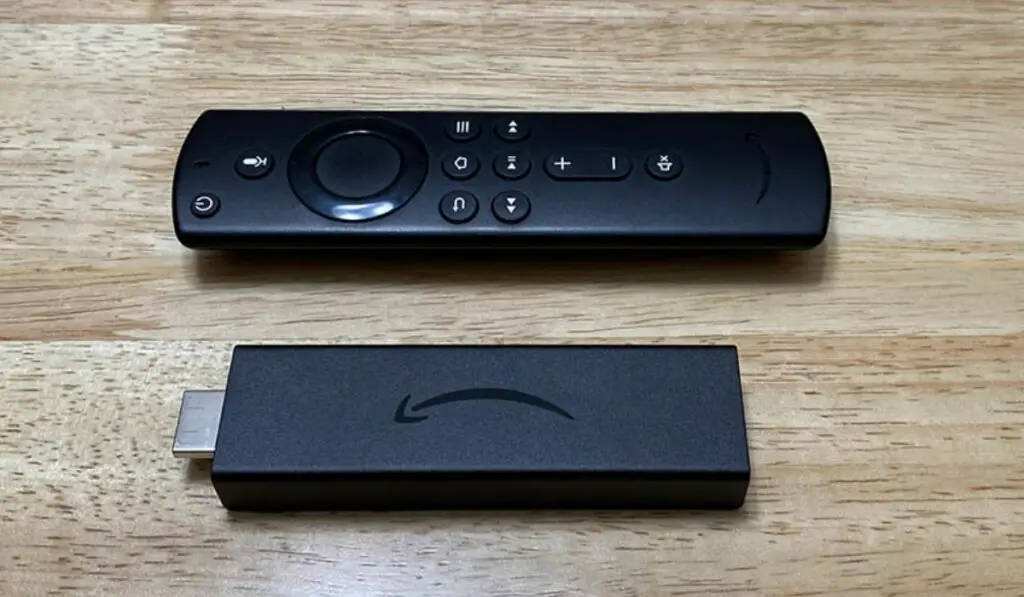A 4K Fire TV Stick will work with a non-4K TV. However, it will be limited to the non-4K TV’s max resolution (likely 1920 x 1080). It won’t be able to deliver 4K or high-definition picture, since non-4K TVs don’t support HDR. There are pros and cons to using a 4K Fire TV Stick with a non-4K TV, but it may be worth it to go ahead and get the 4K Fire TV Stick. With the additional features and the likelihood that it will eventually end up being used on a 4K TV in the future, you may find it to be the better option.
Difference Between 4K and Non-4K TVs
Most people are familiar with 4K TVs and non-4K TVs. With 4K and other higher-resolution TVs now available, you may be wondering what the real difference is between TVs that aren’t 4K and TVs that are. Are they really that different? There are many different types of 4K and non-4K TVs on the market today, and it can be hard to keep track. So let’s get down to the basics and figure out what they each offer.
Resolution
When it comes to resolution, 4K TVs are known for their ultra-high definition (Ultra HD or UHD), while most normal TVs are just labeled ‘high-definition’. The amount of definition refers to the resolution and the pixels that the TV offers. When it comes to specs for resolution, all 4K TVs come with a higher resolution than all non-4K TVs. The 4K resolution is 3840 x 2160 pixels to provide a detailed, ultra-crisp, and clear picture. On the contrary, most non-4k TVs have 1920 x 1080 pixels or below.
Different Ways of Measuring
The 4K TV designation refers to the ~4000 horizontal pixels. Typically, 4K TV resolution is labeled according to the vertical pixels, while non-4k TVs use their vertical lines to make up their high definition resolution. When compared, a typical 4K TV features approximately 2160 pixels vertically.
Scaling Down
Most times, a recording on a 4K TV will need to be scaled to a lower resolution. One may wish to scale a 4K resolution to a 2K high definition output. It has been shown when comparing the video quality of 4K, which has to be scaled to 2K, the picture quality is noticeably more detailed than from the recording in 2K as the default. For users who expect the highest quality motion picture capability, 4K ticks all the boxes. As video resolutions creep up across the board, eventually 4k will be normal, or even standard. Right now it’s still firmly the high end of Televisions, but in just a few years it will become jarring to see a TV running at 1080p or 2k.
Recommended Viewing Distance
Due to the increase in resolution of 4K TVs when compared to non-4K TVs, 4K TVs allow the viewer to position themselves much closer while enjoying a cleaner and clearer picture. The optimal recommended distance for a 4K TV can be two times closer than the recommended distance for a non-4K TV. When watching a 4K TV, the experience is best when sitting close. You may be interested in connecting your Fire TV to a 4k projector, which is a great option. Note that if you do that it will change the viewing distance a lot, but we have another article discussing some of the details here.
Difference Between the Regular and 4K Fire TV Sticks
The main takeaway is that, if you have a 4k TV or think you might buy one in the next few years, it’s probably worth your money to upgrade to the 4k TV Stick to future-proof your setup as much as possible.
Design and Build Quality
When it comes to the overall structure, 4K Fire TV Sticks are a bigger size than classic Fire TV Sticks. The classic Fire TV Stick is near the size of a portable USB external hard drive, and the 4K Fire TV Stick is a large square shape. This is because it packs in more advanced computing components to process the higher quality video signal. Both devices are study and a bit chunky, which isn’t a problem because they’re designed to be out of sight. The controllers are the same, with a nice soft-touch finish that’s a pleasure to use but might attract the wrong kind of attention from pets…luckily they’re relatively cheap to replace.
Features
The 4K Fire TV stick features an Ultra High Definition that supports HDR (more on that in our guide), HDR+, and Dolby Vision, which means more pixels and more picture clarity for a better viewing experience. However, for you to be able to watch 4K high-quality videos, your television must be 4K-enabled.
Price

